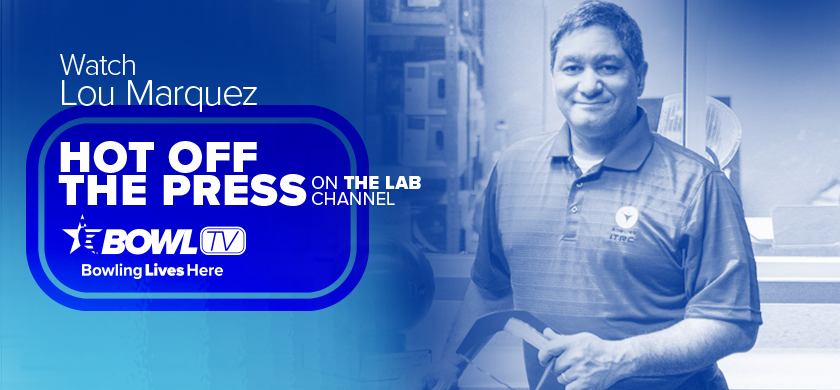By Lou Marquez on May 27, 2019 11:16:24 AM
In the last couple episodes, we talked about why adjusting the surface of your bowling ball is important and what different types of reactions you can create by adding more or less surface to a ball. This led to a question from one of our viewers, which got me thinking quite a bit about surface pads.
 Paraphrasing, "Do the numbers on the surface pads directly correspond to the surface on the bowling ball?"
Paraphrasing, "Do the numbers on the surface pads directly correspond to the surface on the bowling ball?"
That is, does a 500-grit pad make a bowling ball register at 500 grit on the surface scanner? Does a 1,000-grit pad make a ball show 1,000 grit on the scanner?
Rather than tell you the answer based on my experience, I thought it would make more sense to actually do an experiment to show you exactly how a surface pad affects a bowling ball.
500-Grit Pad
We'll start with a ball that's currently reading at approximately 3,000 grit, then hit it with a 500-grit pad to see if we can get the ball to move from 3,000 all the way down to 500.
As we've done in a previous episode, we'll rub the ball with the surface pad in random circles, making sure to cover the entire surface of the ball. Fun fact: this is actually a rule. You can't simply add surface to certain parts of the ball for use in competition. If you're going to add surface, you must apply it to the entire ball.
You can see how much dust this kicks up, so we'll want to clean the ball after we finish sanding.
The surface scanner gives us the results: our ball is now showing an average grit of 1,651. Since we started at about 3,000, our 500-grit pad cut the average grit in half, but really didn't get anywhere close to 500.
Following this experiment, I resurfaced the ball back to 3,000 grit. Don't worry-we'll get more in-depth on how I did that in an upcoming episode. For now, we just wanted to make sure we were running our two experiments from the same starting point.
1,000-Grit Pad
This time, we'll use a 1,000-grit pad. It's important to note this pad is from a different manufacturer than the 500-grit pad, so we might see some drastically different results.
Using the same process as before, we'll cover the entire surface of the ball with random circles, applied with an even pressure. Then, we clean the ball and put the scanner to work again.
So, about those drastically different results: we have some. This 1,000-grit pad has lowered the average grit on the ball's surface from 3,000 to 917. This is much closer to its number than our 500-grit pad.
What Did We Learn?
We can definitively say that applying surface to a bowling ball lowers the ball's average grit, which is exactly why we're applying the surface.
We can also say the numbering systems are different for each manufacturer. I'm not saying one pad is better than another, but you'll need to determine which pad is right for you and your game. It comes down to your personal preference and how you can use surface pads to generate the reaction you want to see on the lanes.
I recommend you experiment with different pads to see how you can best get your ball to your ideal surface for your lane conditions.
Now, we've seen the numbers in the surface scanner. In upcoming episodes, we'll take the pads to the lanes and see how the ball reaction changes.
Lou




comments